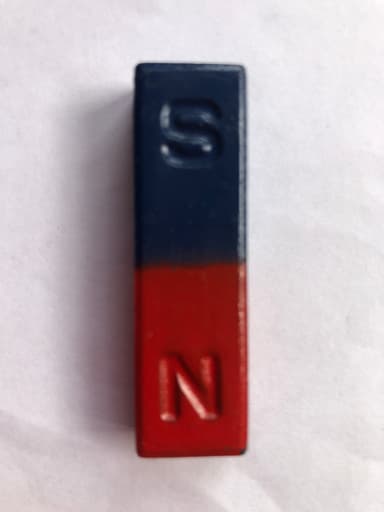Myths about teaching can hold you back
- Year 3
Different magnets and their parts
I can identify and name different types of magnets and their parts.
- Year 3
Different magnets and their parts
I can identify and name different types of magnets and their parts.
These resources will be removed by end of Summer Term 2025.
Switch to our new teaching resources now - designed by teachers and leading subject experts, and tested in classrooms.
These resources were created for remote use during the pandemic and are not designed for classroom teaching.
Lesson details
Key learning points
- Magnets can be different sizes and shapes.
- There are different types of magnets, including bar, ring, button and horseshoe.
- Scientists refer to the poles of a magnet as a north-seeking (N) pole and a south-seeking (S) pole.
- Magnets always point north because Earth acts like a giant magnet. Its core contains iron, which is magnetic.
Keywords
Magnet - A magnet is an object that can attract magnetic materials, such as iron and steel.
Poles - Every magnet has two poles, and on a bar magnet, these are at opposite ends of the magnet.
North-seeking - The north-seeking pole of a magnet is the part that points north when the magnet is allowed to move freely.
South-seeking - The south-seeking pole of a magnet is the part that points south when the magnet is allowed to move freely.
Common misconception
All magnets look the same. The poles of all magnets are the ends.
Real examples and diagrams of different magnets and their poles will be given.
To help you plan your year 3 science lesson on: Different magnets and their parts, download all teaching resources for free and adapt to suit your pupils' needs...
To help you plan your year 3 science lesson on: Different magnets and their parts, download all teaching resources for free and adapt to suit your pupils' needs.
The starter quiz will activate and check your pupils' prior knowledge, with versions available both with and without answers in PDF format.
We use learning cycles to break down learning into key concepts or ideas linked to the learning outcome. Each learning cycle features explanations with checks for understanding and practice tasks with feedback. All of this is found in our slide decks, ready for you to download and edit. The practice tasks are also available as printable worksheets and some lessons have additional materials with extra material you might need for teaching the lesson.
The assessment exit quiz will test your pupils' understanding of the key learning points.
Our video is a tool for planning, showing how other teachers might teach the lesson, offering helpful tips, modelled explanations and inspiration for your own delivery in the classroom. Plus, you can set it as homework or revision for pupils and keep their learning on track by sharing an online pupil version of this lesson.
Explore more key stage 2 science lessons from the Simple forces including magnets unit, dive into the full primary science curriculum, or learn more about lesson planning.

Equipment
See additional material for full guidance.
Content guidance
- Risk assessment required - equipment
Supervision
Adult supervision required
Licence
Prior knowledge starter quiz
6 Questions
Q1.Yes or no - Are all magnets metal?
Q2.If a metal object moves towards a magnet, it is to the magnet.
Q3.Which of these is not an example of a contact force?
Q4.Yes or no - Is everything made from metal attracted to a magnet?
Q5.Which statement is true about magnetic forces?
Q6.Match the type of force to the example.
iron nails moving towards lodestone rock
bike wheels slowing down on the playground
Assessment exit quiz
6 Questions
Q1.Which of these are types of magnets?
Q2.Which statements below are true?
Q3.If you float a bar magnet in water, it will turn until...
Q4.What does the N on the end of a bar magnet stand for?



